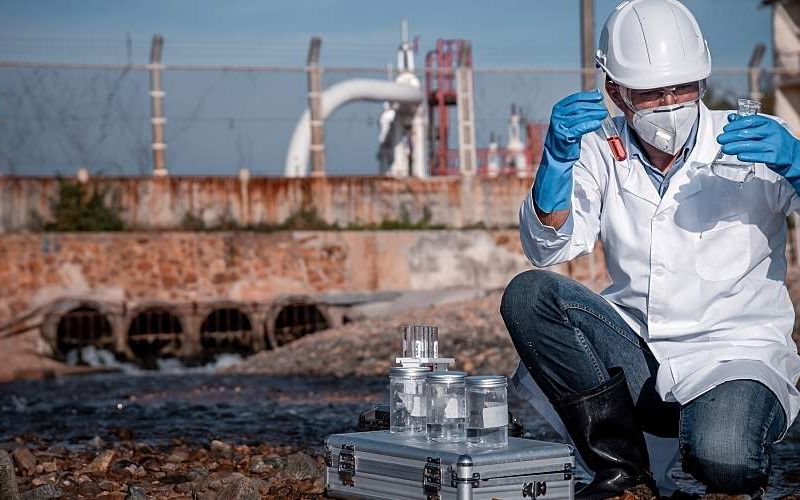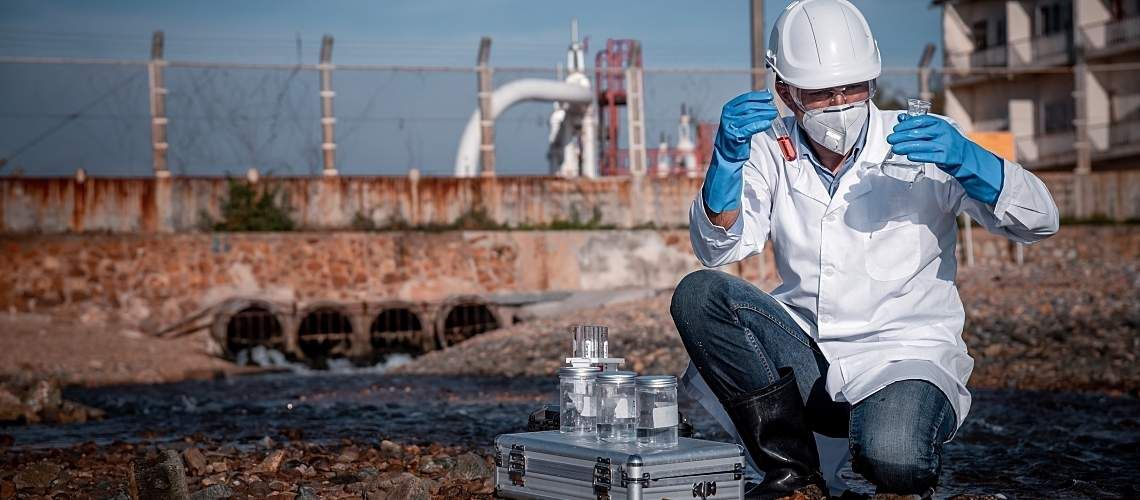A Water Quality Crisis Threatens Half the World's Population


If you could carry all Earth's water in a 5-gallon bucket, the amount of freshwater in the bucket would fill just 2 cups. Polar ice caps lock up three-quarters of that, leaving only one-half of a cup available as surface water, groundwater, and water vapor. And of that, just one drop in the bucket has water quality high enough for life on Earth to use for drinking.
That scant amount must serve the 8 billion people on the planet—and soon, the 11.2 billion people the United Nations (U.N.) projects by 2100. As the world's population grows, the demand for access to clean water rises with it. Humans depend on high surface water quality, but we are also responsible for much of the deterioration in supply.
Although little is certain about how surface water will change, a study published in Nature Water sheds light on the challenges during the rest of the century. According to the authors, "While surface water quality is projected to improve in most developed countries, there is an important caveat: the outlook for the poorest nations is bleak." Already, more than a quarter of the world's population relies on unsafe drinking water, according to UNESCO.
Here's a closer look at the models developed to predict impacts, the causes of surface water pollution, and the implications for water management practices.
Water Pollution Models Show Shifting Hotspots
Using models of surface water pollution, the researchers assessed how climate change and societal developments would impact quality. The models simulated temperature and several indicators of poor water quality to predict the portion of the world's population that would be exposed to them by 2100:
- 17-27% of the population will be exposed to salinity (total dissolved solids) pollution.
- 20-37% will be exposed to organic degradation (biological oxygen demand) pollution.
- 22-44% will be exposed to pathogens (fecal coliforms) pollution.
The East Asia and Pacific Region has historically been a hotspot for surface water pollution, although the scenarios show improvement by 2100. Still, the study projected continuing degradation for the Philippines, Indonesia, and Vietnam.
The models also showed that Sub-Saharan Africa will likely become the new hotspot for surface water pollution—no matter how climate change and economic growth evolve. The study estimated that the number of people there exposed to pollutant concentrations could more than double under the most optimistic scenario and increase fivefold under pessimistic assumptions.
Climate and Development Damages Water Quality
Contamination of surface water bodies occurs primarily due to climate change and socio-economic development. The warming climate is unsettling the hydrologic regime, resulting in more floods and droughts. Floodwaters sweep contaminants—from fertilizers and pesticides to oil and grease to sediment—into water bodies as nonpoint source pollution. Droughts make water less available and concentrate harmful substances. And rapid development increases population, land use, and economic growth, intensifying water demand.
Pollutants can come from almost any water use sector, including domestic, manufacturing, livestock, and irrigation activities—and the loads are expected to increase. There's currently a lack of agreement globally on the management practices to mitigate pollution's damaging effects.
That's left more than 2 billion people struggling to access safe drinking water, according to the U.N. Populations under water stress include about 80% of those in Asia, particularly in northeast China, as well as in India and Pakistan. This results in the death of more than 800,000 people each year from water-borne diseases in locations where water quality testing isn't sufficient to protect them.
Solutions Require Consistent Management Practices
The study's lead author, Edward Jones, emphasized the need for equitable and sustainable development, particularly in regions expected to experience the most significant water pollution challenges. Limiting global warming and human-caused water pollution will be critical as the number of people and the demand for water escalate.
Management practices that conserve water, address pollution, and increase testing can safeguard humans and their livelihoods, along with ecosystem health. But societies everywhere must take action now to avoid the worst scenarios and move toward a more optimistic future.






